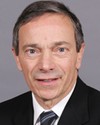Thank you, Chair.
Mr. Kingsley and your colleagues, thank you for being here and for your presentation.
In our previous discussions with you and other witnesses, we identified two particularly critical issues in terms of the proposed bill and the identification of people. One is the low registration of voters in particularly remote aboriginal communities. It was suggested, I think, at one time that we look for your assistance in designing a process to better target areas of clear under-representation on the voters list, the enumeration list, and whether there was some triage or other approach that could deal with them. It may be people in inner cities, in shelters. It may be people in remote communities. That seemed to be an area where there is a large degree of under-representation. Is there something remedial, some steps that we can take to target those areas?
The second issue was with respect to photo ID and government photo ID, as to whether the status cards could be acceptable. They're not listed here by you as approved government cards. Is there some way that those status cards can be standardized, and perhaps enhanced across the country, so that people living in reserve communities could actually have a photo card with status and showing their residence, at least connected to that reserve?
My final point is on the numbers you give in your report with respect to the 4.5 million electors, or one in five, who will be required to prove their identity and the way that those numbers have been accumulated. I guess I'm looking for a general impression from you, or any specific evidence you have through your experience, of whether a consequence of those figures has led to a suspicion of fraud, or actual fraud detected, or to what extent those figures contribute to declining voter turnout in federal elections.
What's the size of the pie here? What are we missing? What should we be focusing on, and what are those tools?

